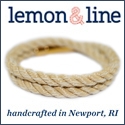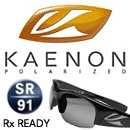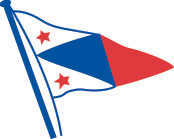
|
|
Lessons from 50 Years of Junior Sailing by Paul Heineken, StFYC Junior Committee Chair (October 15, 2009) My family says I’m permanently arrested at the sailing instructor level of development. As Co-Chair of the Junior Committee at St. Francis Yacht Club, I have been forced to regress. What follows are my reflections on the locations, changes, experiences, and lessons learned over those five decades: 1950’s As a barefoot kid in Pine Beach, N.J., I got a “teaser” ride with a bunch of kids on a Lightning. I loved it, but couldn’t afford the $5 to join the junior program, so for the rest of the summer I watched from the beach. This fanned the fire to sail, and led to the first lesson: Make junior sailing accessible. 1960’s During a high school summer, I sold myself as a sailing instructor to a summer camp in New Hampshire. (No US Sailing Certificates then.) After preparing by memorizing the "Golden Book of Sailing,” I got the kids safely sailing Sunfish dinghies. But the key discovery was integrating water games with the sailing. For most 10 year olds, pirate, sponge tag, bucket attack, etc., are far more fun than racing--but sailing well improved each team’s attack. The second lesson: Make it fun. As a college student, I took a summer job on the south shore of Long Island at a club with a hot new fleet of International 420s, complete with trapeze and spinnaker. That was the easiest lesson. Sailing fast is more fun, (and trapezing beats hiking). The summer before medical school I landed a job as the head instructor at Royal Bermuda YC. A summer in Bermuda, accompanied by my Finn Dinghy, was a wonderful experience. Competing in the Finn Gold Cup against the likes of Paul Elvstrom was icing on the cake. That lesson: Keep the instructor happy. And let him or her race every now and then. 1970's On the Charles River in urban Boston-Cambridge, MIT had a great racing program—sailing tubby Tech Dinghies. As a busy medical student and resident, this was the only sailing I had time to do. Soon I learned that the slow Tech made the “small pond” much bigger, and proved the next lesson: Competition is what makes good racing, not the boat. My move to San Francisco occurred at the birth of the local Laser phenomenon. Don Trask built Lasers and junior sailors sailed them to their limits. John Bertrand, Jeff Madrigali, Paul Cayard, Craig Healy, and many others pushed each other such that the whole group excelled. They went on to win world championships, proving the next lesson: When kids are ready, challenge them against the best. The stock Windsurfer was an active one-design racing class for all ages and sizes. One often saw 60+ boards at events on the Bay or Delta. The windsurfer was widely available, inexpensive, and easily transported. It got many people onto the water that had never sailed a boat. Local shops ran training programs for kids and adults. Racing was made fair by defining weight classes. The next lesson is obvious: To be accessible, entry level sailing must be affordable. 1980's The most competitive kids from all over the Bay Area took advantage of the StFYC’s Junior Program because it offered the only full-time coach and the best racing opportunities. The team traveled to regattas near and far, with logistical support and coaching; it had great success. The lesson: To succeed at the top, there must be a good coach. Meanwhile, the technology of windsurfing evolved. Boards and sails improved tremendously and high-end racing flourished. But the simplicity of the entry level one-design Windsurfer was lost, and fewer kids and beginners entered sailing through that platform. 1990's Other yacht clubs with good beginner programs built stronger upper level programs with coaches and traveling teams. The kids that started with them stayed. High school sailing teams aligned their kids with the club near their school. The high school regatta schedule filled spring and fall weekends that had been used for open (Laser) competitions. The number of highly competitive juniors joining StFYC dwindled. The lesson: Successful junior programs build from beginner to advanced levels. The FJ proved satisfactory for high school dinghy racing, but was not a great springboard to other sailing platforms, e.g. Lasers, skiffs, windsurfers, or keelboats. Parents didn’t purchase other classes of boats because the FJ’s were available at their club and filled most of the kids’ sailing time. Entry into Lasers or even windsurfers became too expensive, and parents participation in high school sailing was more as “little league parents”, than as sailing role models. The lesson: Successful junior programs have actively involved parents. 2000s By 2000, the Optimist Dinghy arrived on the Bay. It offered an international class that was inexpensive and far more forgiving in Bay conditions that the El Toro. Where previously most StFYC beginner instruction took place at Tinsley, beginner Opti sailing expanded at the City Front. Upper level Opti kids began traveling to highly competitive regattas. The Opti was a great overall change, but by creating a racing format for very young kids, it discouraged other kids who were just too young or who had grown early and were too heavy to be competitive. The 29er skiff created another opportunity. It is a high speed trainer for the Olympic 49er, a boat that relishes the Bay’s conditions. For kids 12 and over who have grown too big for an Opti, it offered a fun, fast platform and great competition. I’ve had the joy of racing a 29er with both of my kids, and with a number of other juniors, and witnessed how it reinvigorated their interest in sailing. This lesson hasn’t changed in 50 years: There is no substitute for FAST and FUN. The Present The big initiative is to build windsurfing instruction into our junior camps. The new international trainer board is the BIC Techno 293, a smaller and lighter version of the Olympic RSX. It is excellent in a wide variety of conditions and is equipped with interchangeable rigs of multiple sizes. By providing an accessible and fun learning platform it builds on the advantages of the Opti and the old stock Windsurfer. It will also take advantage of the Club’s uniquely windy location. There is no reason that the Bay Area should not be producing Olympic caliber windsurfers, and this program will help us do it. The Future Fifty years ago, sailing wasn’t accessible to me, and today that is true for most local kids. Under the Club’s new lease, it’s obligated to extend junior opportunities to non-members through community outreach programs. With the generous support of the StFYC Foundation, a variety of options are planned, including the following: 1) day sails on the Blue Water Foundation’s IOR sloop, 2) scholarships to our City Front programs, 3) enlarged and diversified HS sailing practices, and 4) beginner windsurfing clinics. Having learned all these lessons, the plan now is to put it all together. Look for more kids on the docks and around the junior room. It’s the future of the Club. Click here to post your comments in the Scuttlebutt Forum. back to top |







|


